Best MTB trail tires 2026 – we test 12 totally sorted options for hitting the trails
Our pick of the best trail-orientated MTB tires for ultimate grip, support and predictability in all conditions
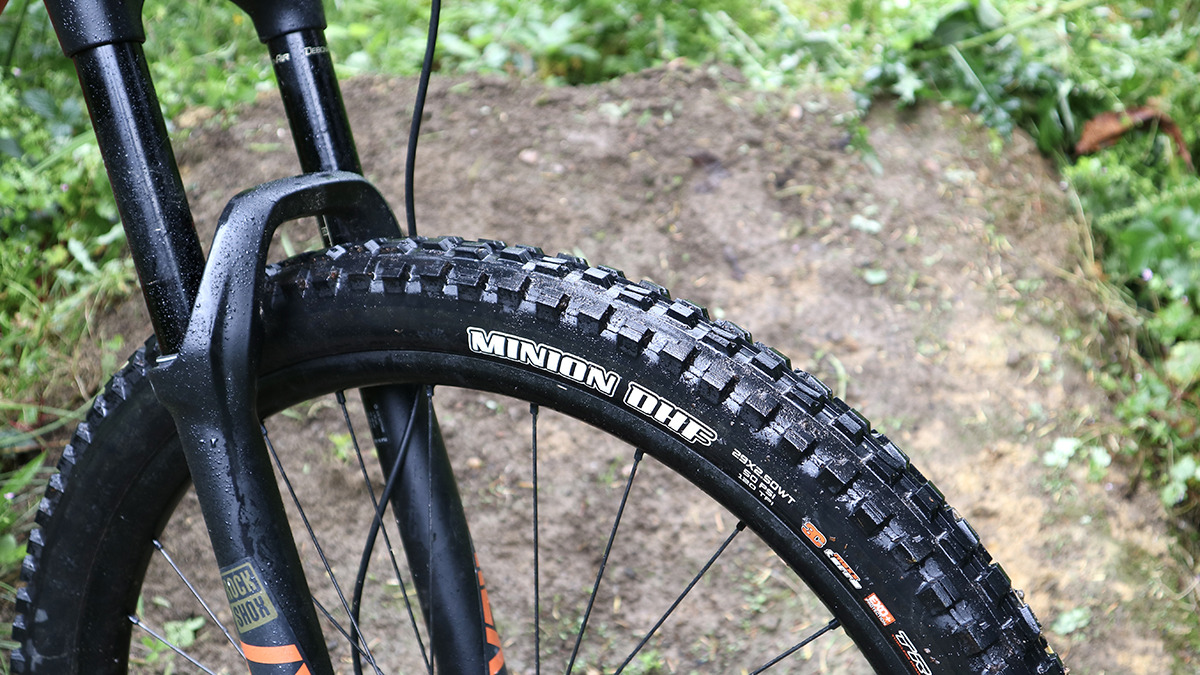
MTB tires are the only component on your bike that touches the dirt, so making sure your contact patch offers maximum grip, without sacrificing rolling speed or adding weight, is critical to riding trails harder, faster, and for longer.
When choosing the best MTB trail tires, it's important to first establish a priority. If you want to save weight, there are some lightweight trail tires out there with thinner casings and lower profile knobs but if you want grip, a softer compound and aggressive shaped lugs may be preferable. With most things, there are trade-offs when choosing the best mountain bike tires, as a featherweight trail tire won’t offer a lot of protection when slamming through a rock garden. However, if you prioritise speed most of all, check out our guide to the best XC tires.
The type of rider you are also matters. If you’re lightweight or highly skilled, you can ride lighter-weight tires, in a smaller size with a thinner casing. If you’re a big rider, or you tend to plow into things, we’d recommend a tire with a thicker sidewall because any increase in rider weight will heighten the risk of pinch flats. And it goes without saying that any trail tire worth its salt should be tubeless compatible.
Our expert testers have put an extensive range of tires through their paces to come up with our pick of the best MTB trail tires that we swear by. We've divided the tires into three categories – front specific, all-rounder and rear specific trail tires – although there is some crossover.
Read on for our complete list of the best MTB trail tires, or if you need help choosing the right tires for you, skip to the bottom of the article for our advice section. For more on MTB tire tech, see our guide on everything you need to know to choose the best tires for your riding.
The quick list
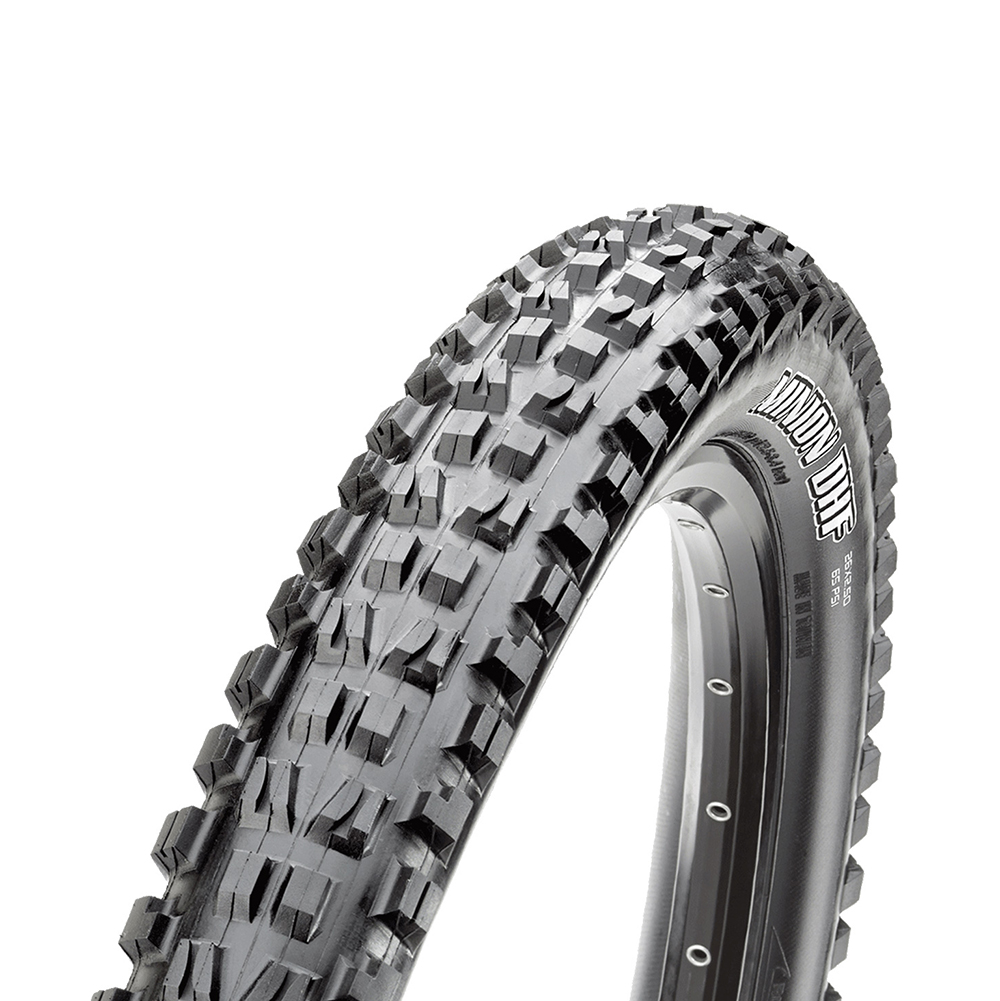
Best overall front MTB trail tire
With a fast roll and excellent grip in all conditions, it's the ultimate do-anything trail tire.
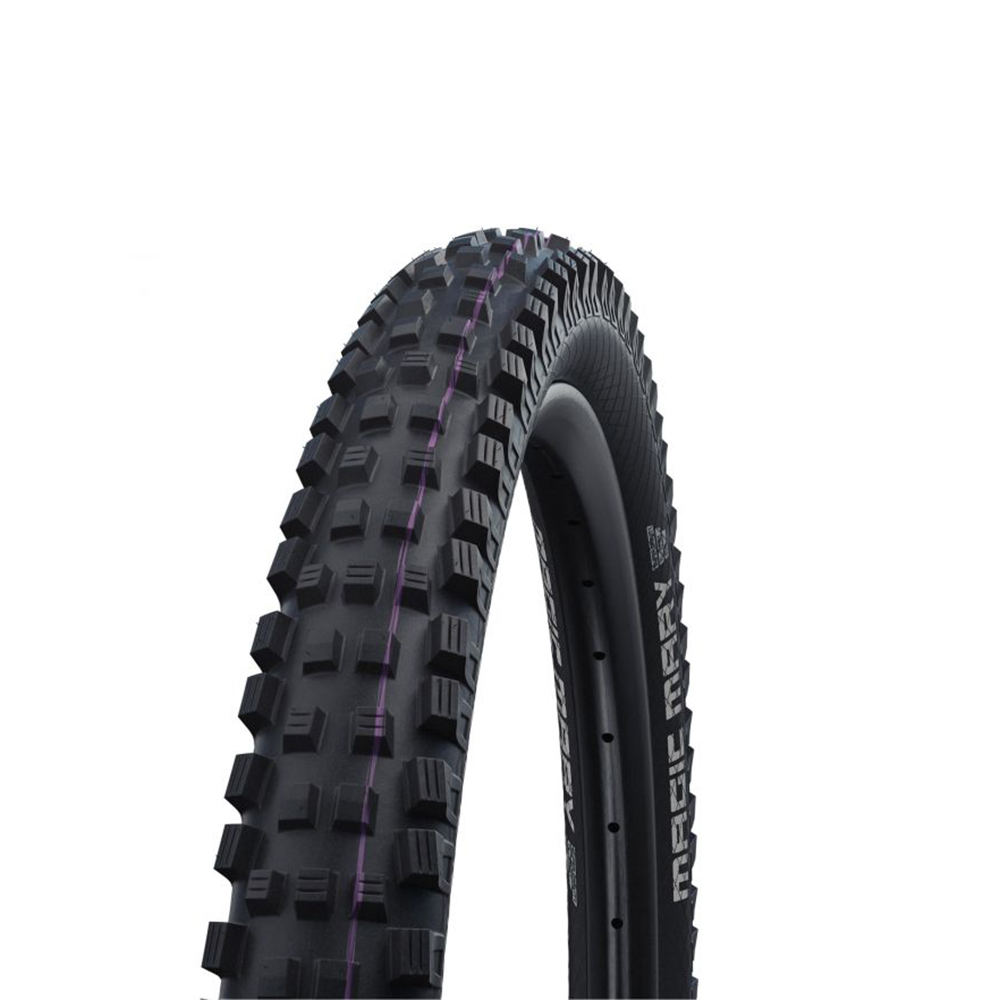
Best value front MTB trail tire
Trustworthy grip and control in the toughest conditions, and some great online deals available.
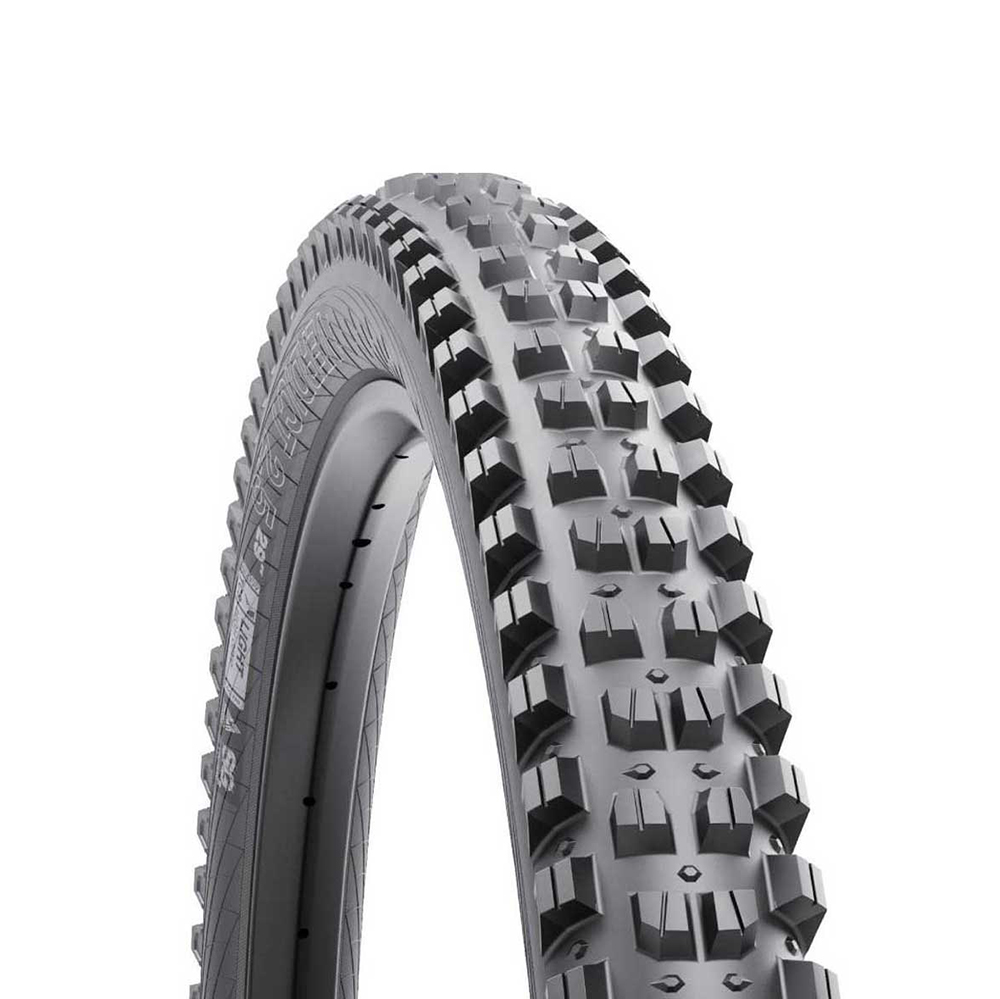
Best grip front MTB trail tire
With awesome grip levels, WTB's tire excels in wet and loamy conditions.
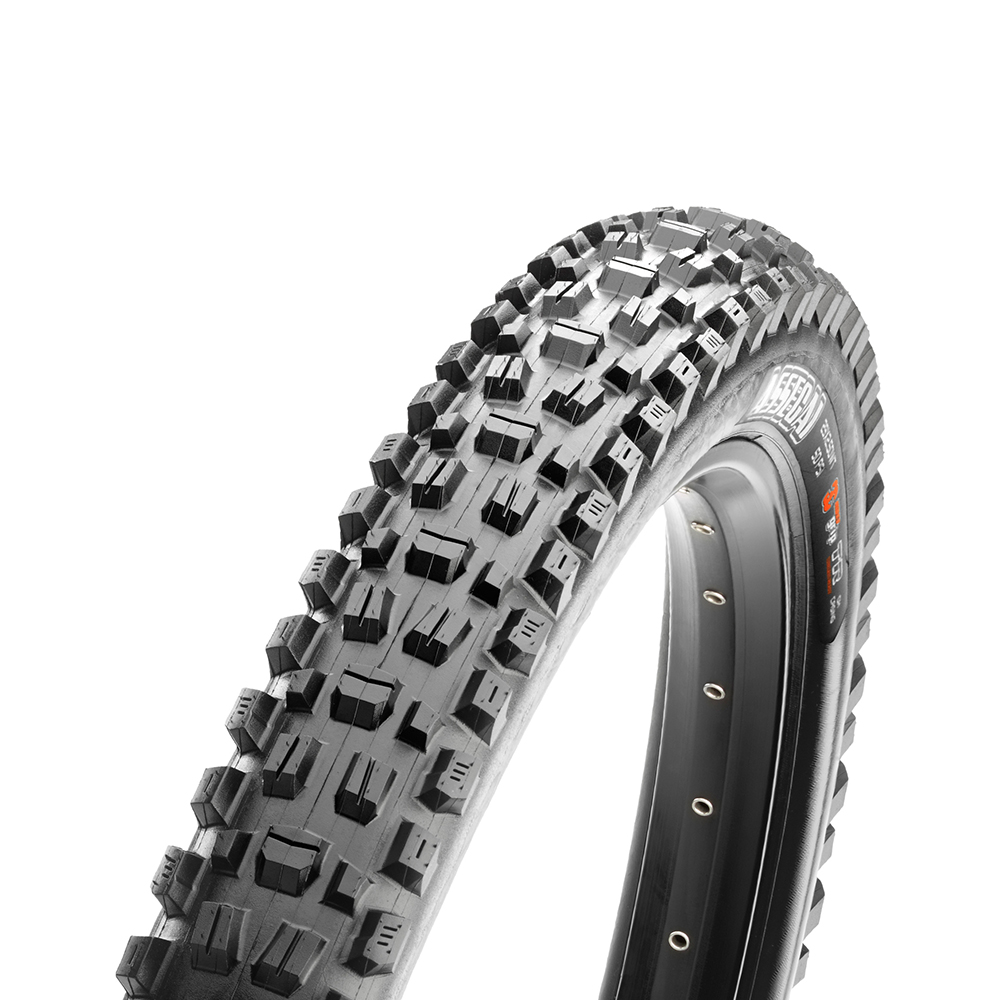
Best all-round MTB trail tire
Superb all-rounder with great grip that works front or rear and in all conditions.

Best MTB trail tire for wet winter
A great choice if you want significant extra grip in the sloppy winter conditions.
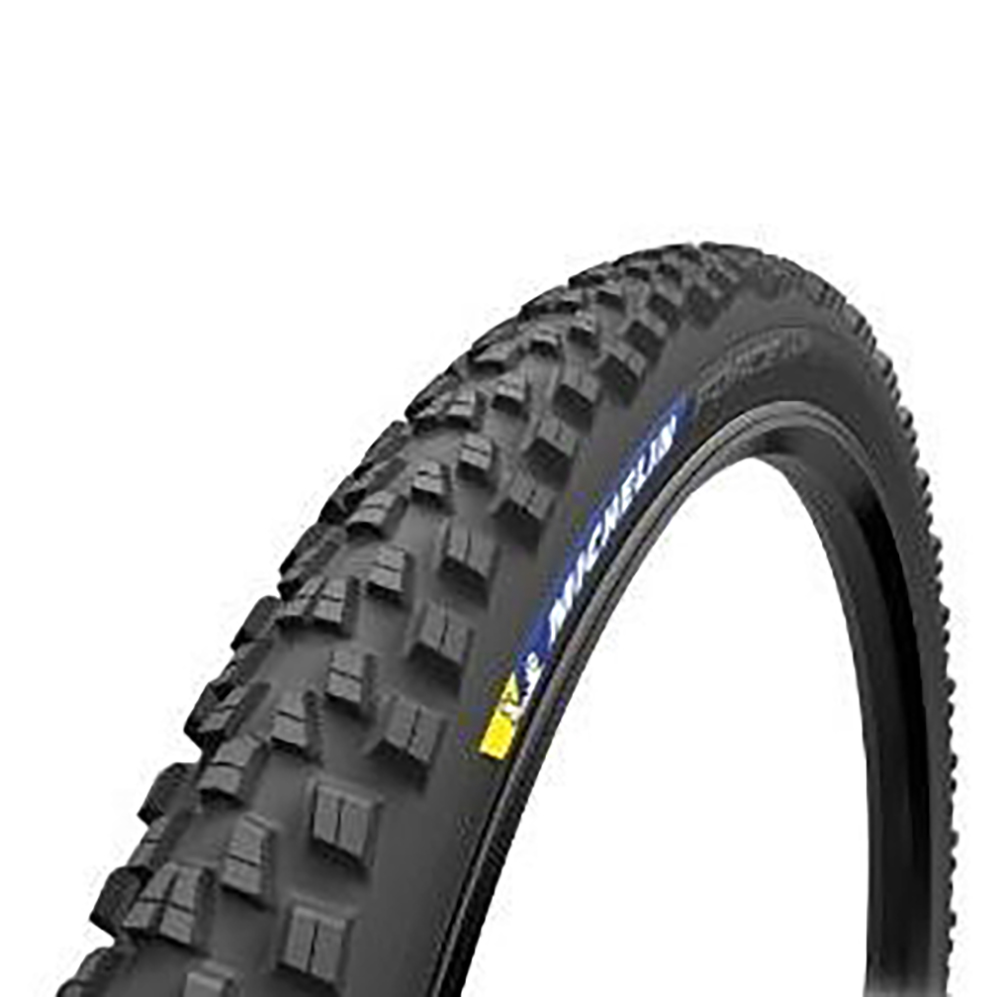
Best MTB trail tire for dry conditions
Tough, durable all-rounder that works well in looser, dried situations.
See the next 6 trail tires ↓
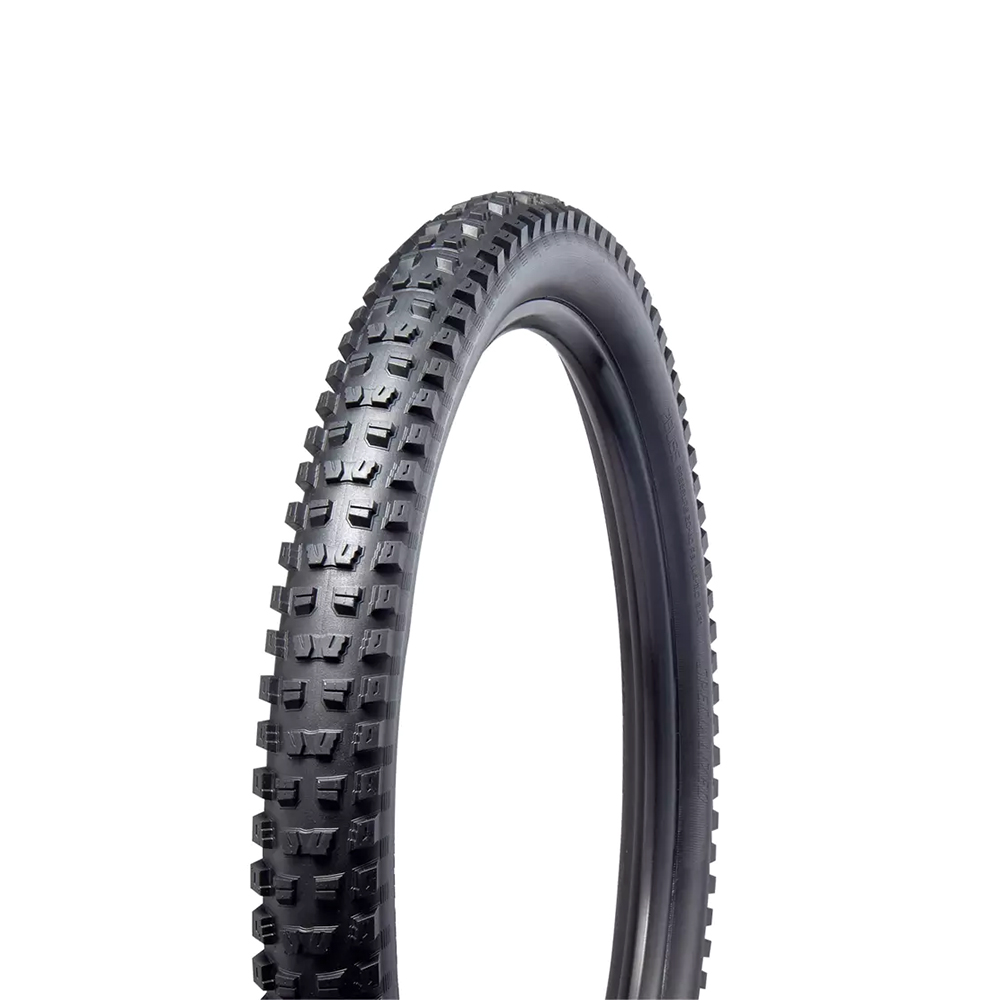
Best damping MTB trail tire
Ultra-damped and mega-grippy trail tire in a wide range of conditions.
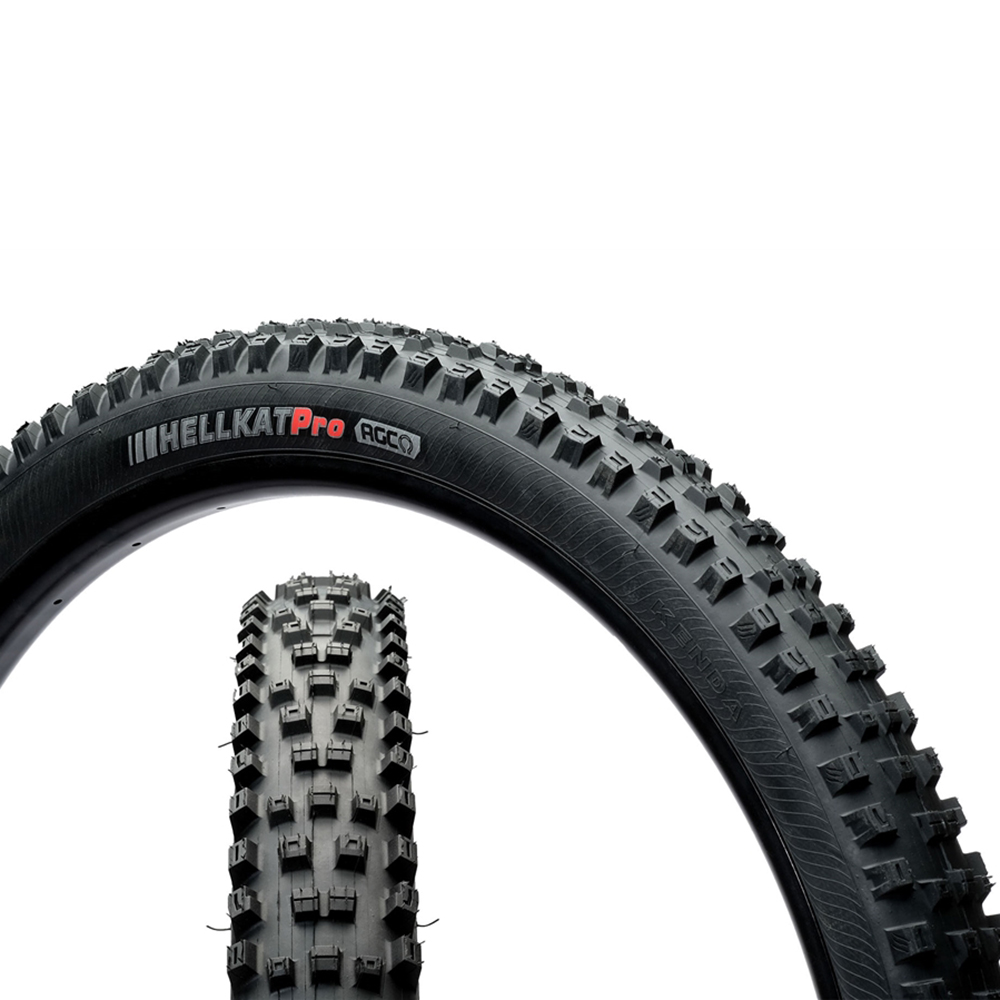
Best lightweight MTB trail tire
Fast-rolling, lightweight tire with good grip and braking traction.
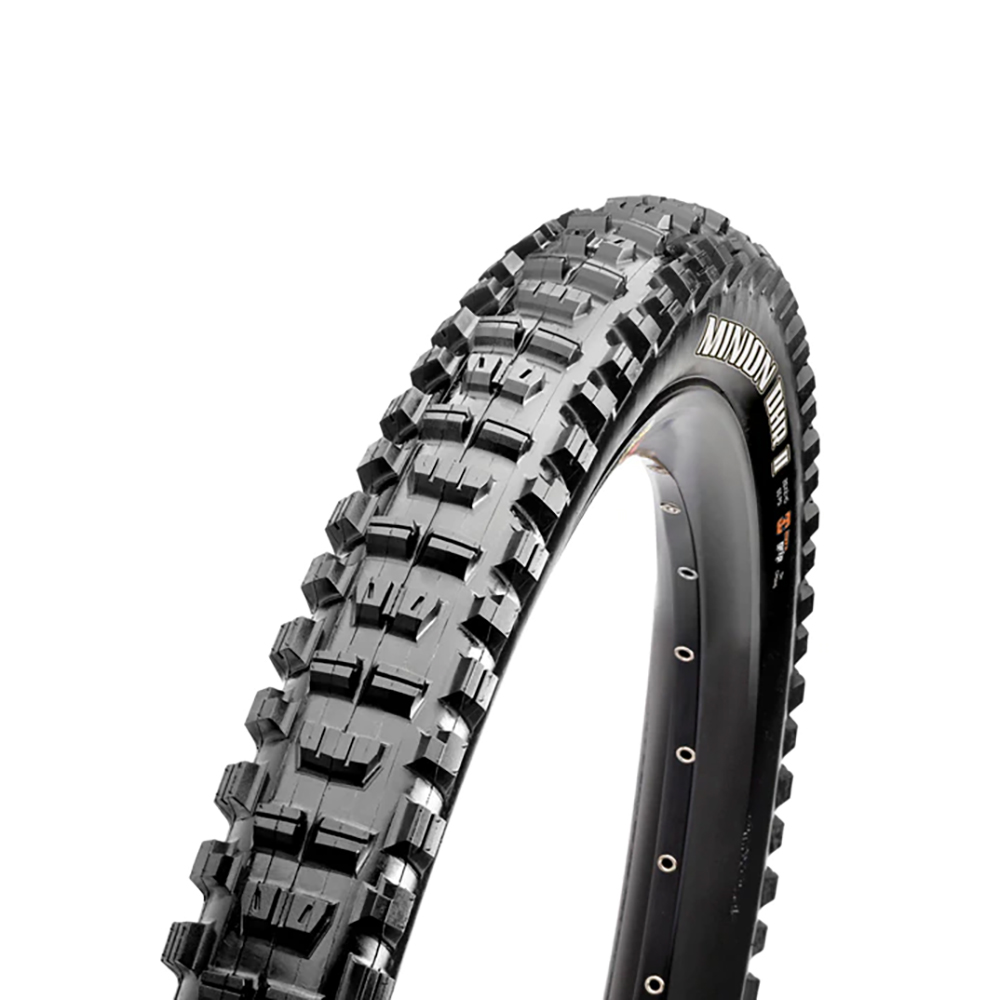
Best overall rear MTB trail tire
Hardcore ‘fit and forget’ mountain bike back tire with excellent all-condition grip.
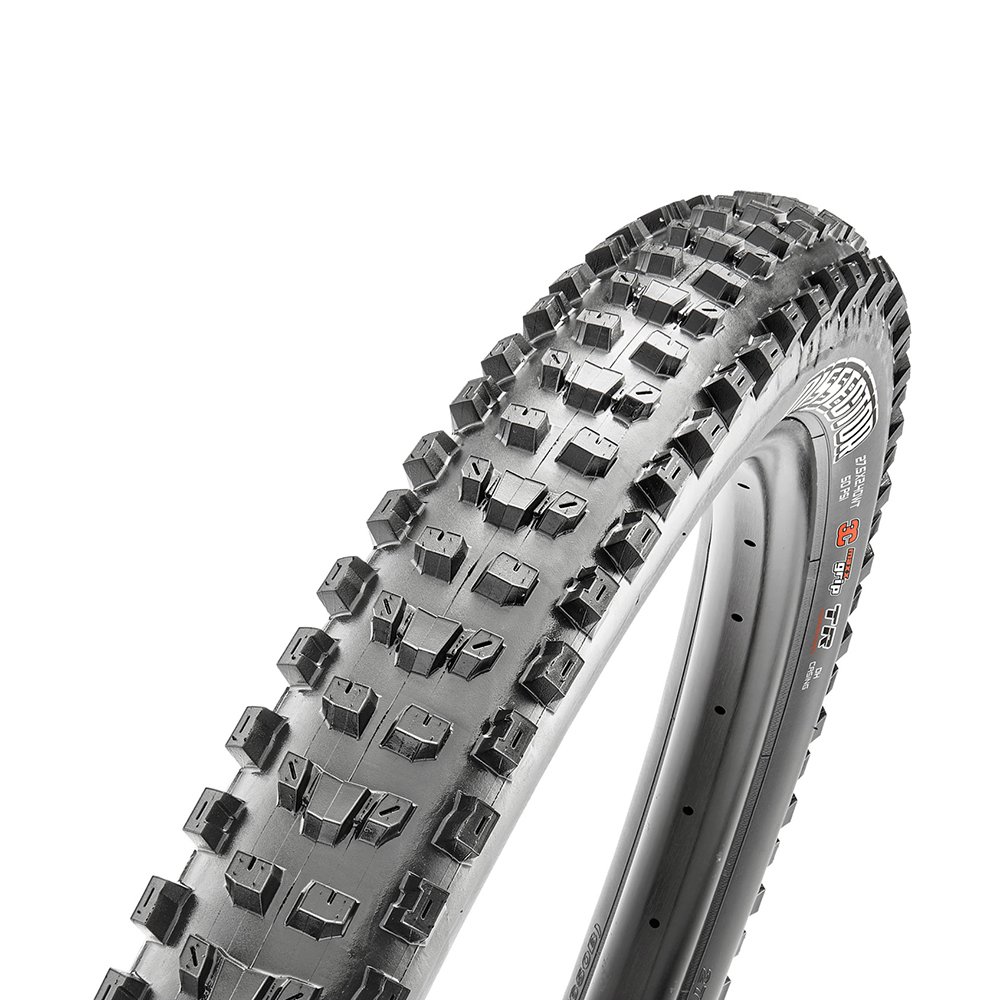
Best fast rear MTB trail tire
Fast-rolling speed and response but still feels damped and anchored.
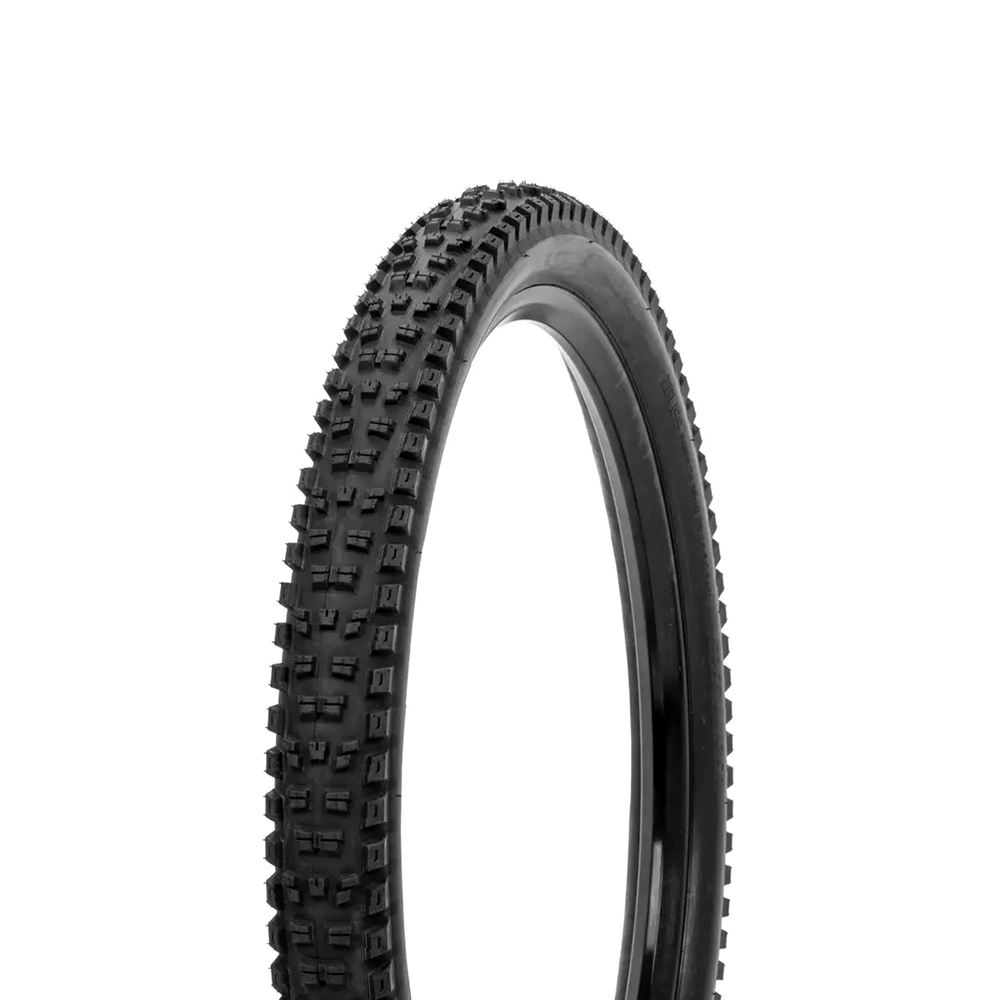
Best quick rolling rear MTB trail tire
A rapid, rear wheel ripper that's hardwearing and great in dry conditions.

Best gravity rear MTB trail tire
Its pronounced tread offers a huge amount of bite when braking and climbing on steep and loamy terrain.
Best MTB trail tires – front specific tires
Why trust BikePerfect
1. Best overall front
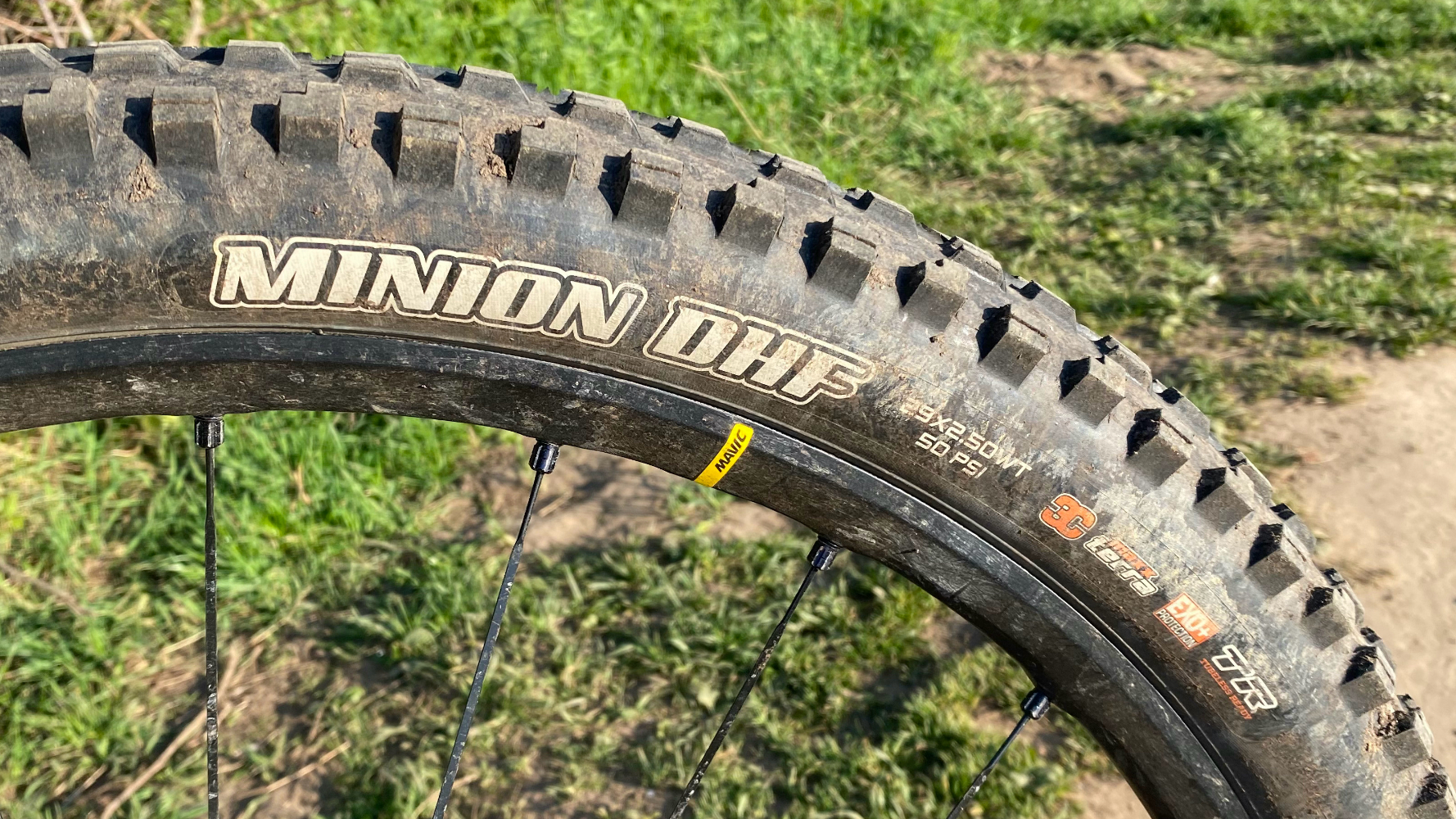
Specifications
Reasons to buy
Reasons to avoid
The Maxxis DHF was a game-changer when it first appeared, and it has continued to dominate the trail and hardcore front tire market ever since. With its massive side knobs, it has great directional control and cornering grip but still rolls faster than you’d expect. It’s really a front-only tire but we know riders that run one at both ends to generate a bit more speed. There are several casing and rubber compound options but the sweet spot for trail riding is the 3C MaxxTerra with the Exo+ casing.
Exo+ is light reinforcement with an extra layer of reinforced material that runs bead to bead. It has a mesh type structure that according to Maxxis improves tread puncture protection by 27 percent, sidewall durability by 51 percent, and pinch-flat resistance by 28 percent.
The 3C compound uses a hard base layer, which creates a solid foundation and stability to the tire, there’s a medium center section for quick rolling and enhanced wear and soft low-rebound rubber edge lugs for the ultimate cornering grip. This custom compound does ramp up the cost, but in our tests we found the Minion DHF was predictable and tenacious and, with its open tread and impressive wet weather performance, we could easily keep it on our bike all year round.
Our reviewer Guy Kesteven enthused: "If I had to pick a single (cost no object) tire for every situation it would be this one… It tips in really smoothly and predictably. Once you’re into the lean you can also load it up aggressively on pretty much every surface from slippery gravel to winter slop and wet woods."
For more info, see our full Maxxis Minion DHF review.
2. Best value front
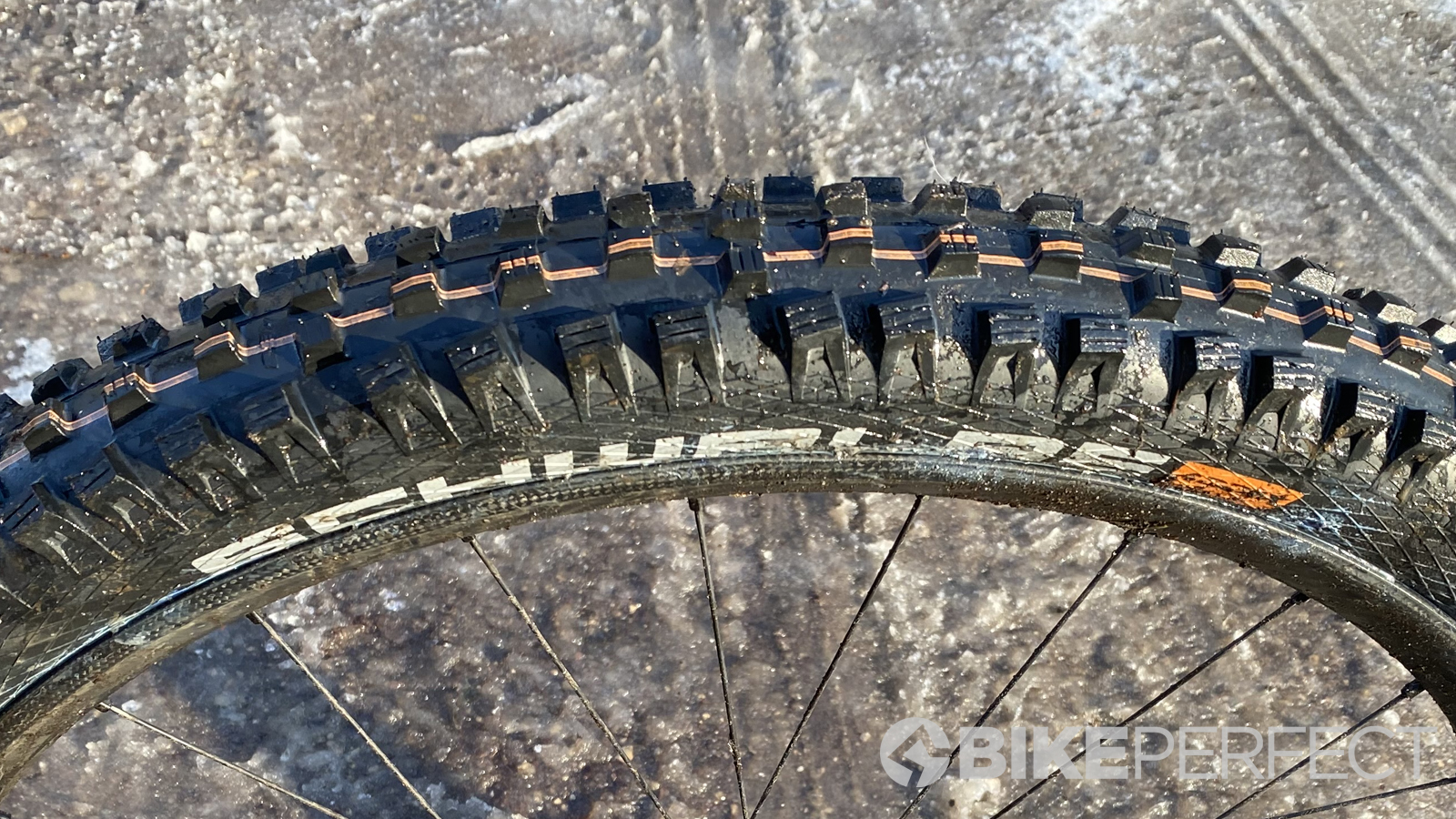
Specifications
Reasons to buy
Reasons to avoid
Visit the Schwalbe website and you’ll see the Magic Mary is tagged as a gravity tire but there is no doubt this tire’s second home is on a trail bike.
Schwalbe produces a vast range of widths in both 27.5 and 29 but also old-school 26in. Three casings are offered – Super Trail, Super Gravity, and Super Downhill. Essentially, you’re looking at two-, four-, and six-ply construction respectively with the downhill tire getting a bit more sidewall protection.
Soft and ultra-soft rubber compounds are available at both the Evolution and Performance levels, which is basically a folding or steel bead. Obviously, the steel bead is cheaper but the Performance tires are slightly heavier across the board.
The Super Trail EVO featured uses the soft Addix rubber compound, which isn’t quite as tacky as claimed but we’ve found the open tread finds grip in nearly all conditions. It also clears amazingly well, and we’ve ridden Magic Mary tires through the winter with no reason to swap to a dedicated mud tire.
Our reviewer Guy Kesteven found, "It feels epically controlled in a ‘totally got your back’ way when rocks, drops or runaway train impact frequency is starting to freak you out, without ever feeling harsh, numb or uncommunicative."
Schwalbe has also built in some new Tubeless Easy technology which seems to have fixed the setup issues we had with some of the previous models.
Check out our full Schwalbe Magic Mary Super Trail tire review for more.
3. Best grip front
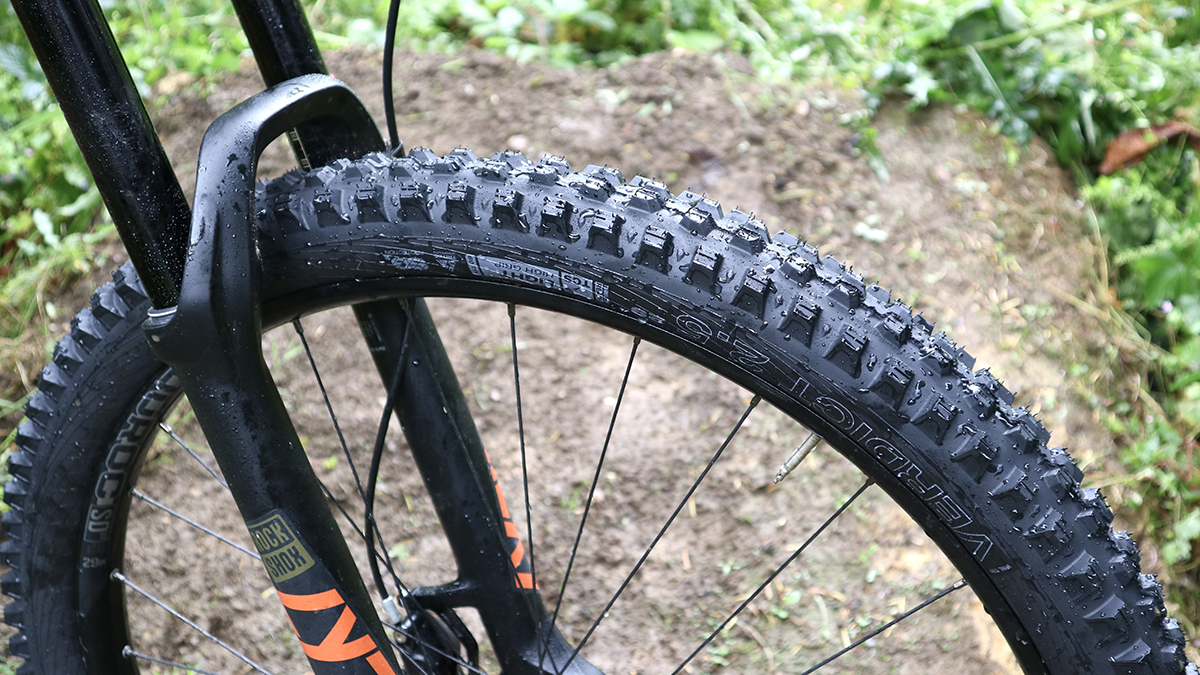
Specifications
Reasons to buy
Reasons to avoid
When WTB first launched the Verdict, it offered a mud version with deeper side knobs, but the standard tire worked so well in the gloop (and elsewhere) that the mud tire was gradually phased out.
The high grip (triple compound) WTB Verdict is an absolute monster. It hooks up where others falter, and in all conditions too. This light version gets the company’s SG2 puncture protection, a double-ply 60Tpi casing that does add weight but still ensures the tire has a supple and responsive ride feel. The Verdict can be fitted to either wheel but excels as a front-only tire offering incredible hold on hardpack, loam or slippery mud.
Like most WTB tires, the Verdict is tubeless-ready, but we found it can be tricky to seat on certain rim brands. It's only offered in a single 2.5in width, so you may struggle with clearance on some frames and suspension forks, especially if you run a mudguard.
At 1,150g for the 29x2.5in sizes, it’s not a lightweight trail tire but the trade-off is an awesome amount of grip, excellent pinch-flat resistance, and an impressive wear rate. It’s criminal how underrated this tire is. In fact back to back this with the tougher WTB Judge on the rear and you’re going to be unstoppable.
Our reviewer Paul Burwell noted: "The Verdict TCS Light High Grip never feels nervous, no matter what surface you’re riding on and, with its impressive wet weather performance, it’s a tire you can easily run year-round."
Check out our full WTB Verdict TCS Light High Grip review.
Best MTB trail tires – all-round trail tires
4. Best all-round
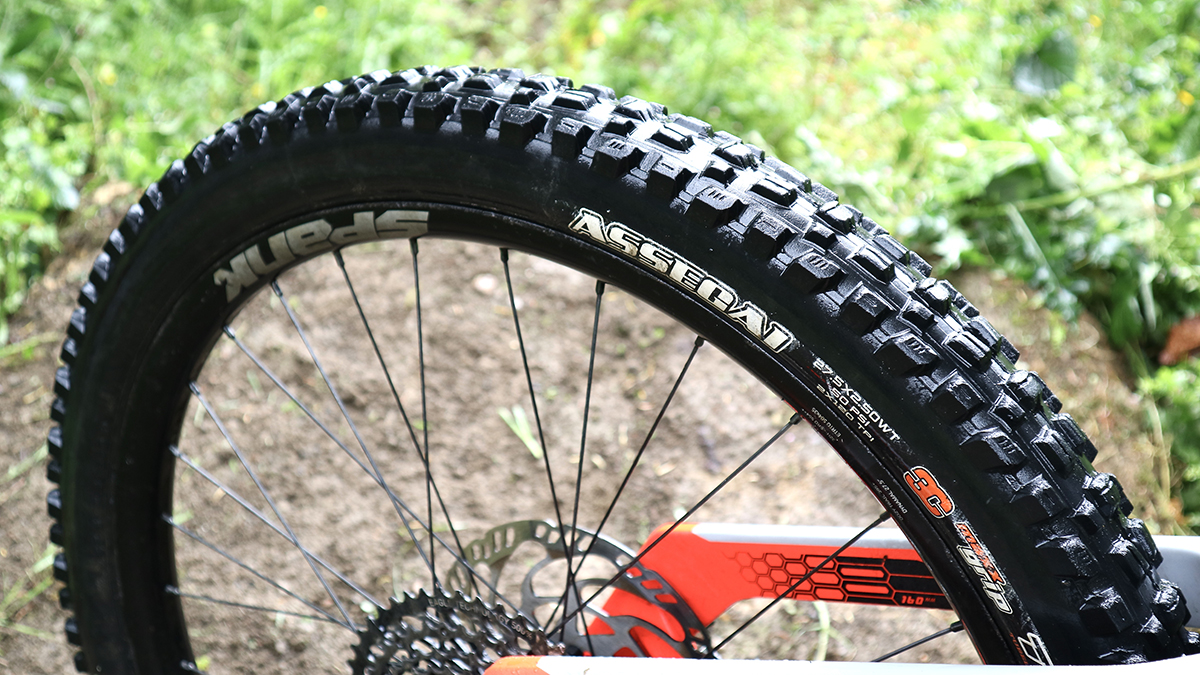
Specifications
Reasons to buy
Reasons to avoid
The Maxxis Assegai was developed by downhill racer Greg Minnaar, so naturally, it’s available with a reinforced Double Down casing but there are lighter Exo and Exo+ versions available for trail riding. The plus tire gets an extra layer of lightweight reinforced nylon called Silkshield. It adds weight but the nylon has a sort of lattice work construction that adds casing stability (you can run lower pressure without the tire folding), thorn-type puncture protection and pinch-flat resistance, which is really handy if you’re riding in the desert or rocky terrain.
Like most of the Maxxis flagship tires, the Assegai comes with either MaxxTerra (medium) or MaxxGrip (soft) triple rubber compounds. What you’re looking at here is a hard stable rubber base, a quick-rolling center section, and then a soft rubber on the edge for grip. MaxxGrip tires don’t keep their sharp edge for long but a good call is to run a MaxxGrip up front with the hardwearing MaxxTerra on the rear.
For trail use, we found the Assegai is one of the best all-rounders. It can handle hardpack and loose conditions as well as wet rocks and, with its open spacing, even deep mud. You can easily ride this tire throughout the year, and it works just as well on the front as on the rear.
Our reviewer Paul Burwell reported: "Grip levels are superb with the softer MaxxGrip tire – it feels so surefooted and never does anything unexpected. It’s really consistent at all lean angles, even chopping and changing lines through tight singletrack. It’s a real confidence tire that lets you push the envelope without having to pay the consequences."
Find out more in our Maxxis Assegai 3C MaxxGrip EXO+ review.
5. Best for wet winter

Specifications
Reasons to buy
Reasons to avoid
If you're after a tire that will give you grip in the worst of wet muds, then look no further than the Specialized Hillbilly. The tire uses the same excellent Gripton T9 60TPI compound as the Specialized Butcher (more on that tire later in this article).
The center/shoulder tread pattern is very different though, following the classic ‘square studs with plenty of space around them’ format of most good soft condition tires. The Hillbilly runs alternating pairs of knobs close together for a slight paddle effect and the knob tops are siped (slotted) to help them to reshape and spread under load.
Weight is average for a modern 2.4in ‘trail tire’ at 1,074g, but at 59mm across, they’re actually closer to 2.3 than 2.4in wide. There’s also a Gravity Grid version but that takes weight beyond 1,300g, which is a hefty pedaling punishment for bombproof survival.
We found the grip and control levels are well up for extreme riding. Our reviewer Guy Kesteven said, "While they don’t ‘lean outwards’ to grab carving/off-camber traction automatically, the side knobs are well-supported enough to deliver the traction as soon as you tip the bars into the turn. The tread cleans super quickly even in clay conditions and when they do start to slide it’s a very predictable, normally saveable push, rather than a sudden snap-out and dump-you situation."
Prices for the Hillbilly and the rest of Specialized's tire range are extremely competitive, which makes them an even better choice.
For more info, check out our full Specialized Hillbilly tire review.
6. Best for dry conditions
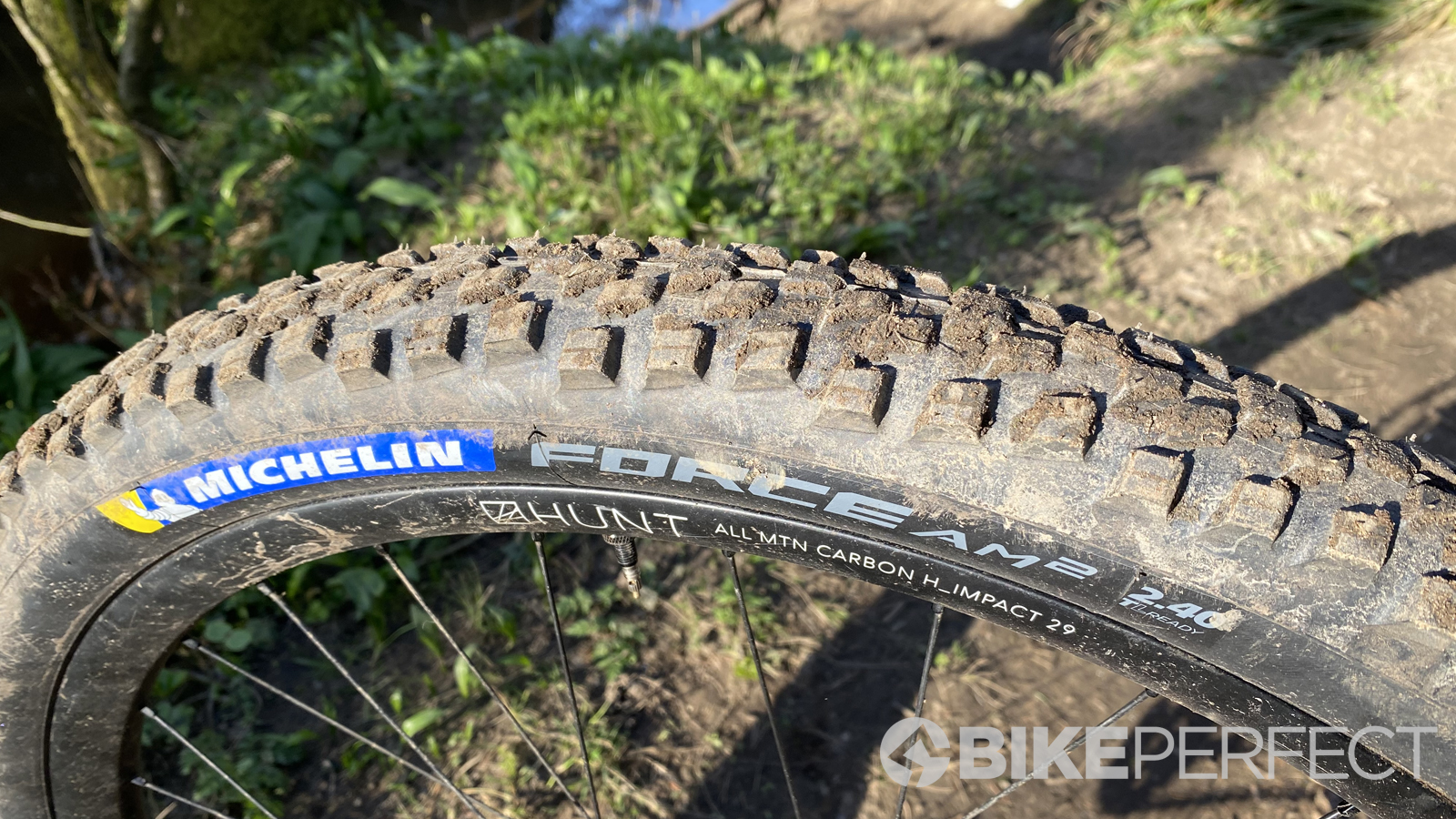
Specifications
Reasons to buy
Reasons to avoid
The Michelin Force AM2 combines the low-profile and quick-rolling tread from the Force XC2 Racing Line with the reinforced Gravity Shield casing (and weight) of the enduro tires. The weight is towards the enduro end but the tread is tightly spaced, and shallow, meaning the Michelin Force AM2 has more pace than most. It lacks the edge bite and control for real aggressive riding but it’s a solid choice for the lightweight, shorter travel trail bike where the riding combines smooth flowy singletrack with a lot of fire road hacking and extended climbs.
The tire uses Michelin’s GumX rubber compound which the company claims is soft, but we measured it at a mid-durometer. It does offer reasonable longevity, but doesn’t have the low-rebound properties of the Maxxis tires and breaks away a little easier. It just means you really need to be on top of your game if you go off the beaten track and start pushing it.
The Force AM2 is tubeless ready, and we've never had any issues with seating, but that makes sense because Michelin was one of the first with tubeless (called UST back then) MTB tires. Available in 2.4 and 2.6in for both 27.5 and 29er bikes.
Our reviewer Guy Kesteven summed up: "They’re communicative with the traction they’ve got and the drier the trails have got the better they’ve performed. Harder compound means they’ll last really well in harder, rockier and drier conditions too and reasonable weight, relatively lively ride feel and lack of drag should make them an active trail center/summer shredding tire."
For more detailed information, see our complete Michelin Force AM2 review.
7. Best damping
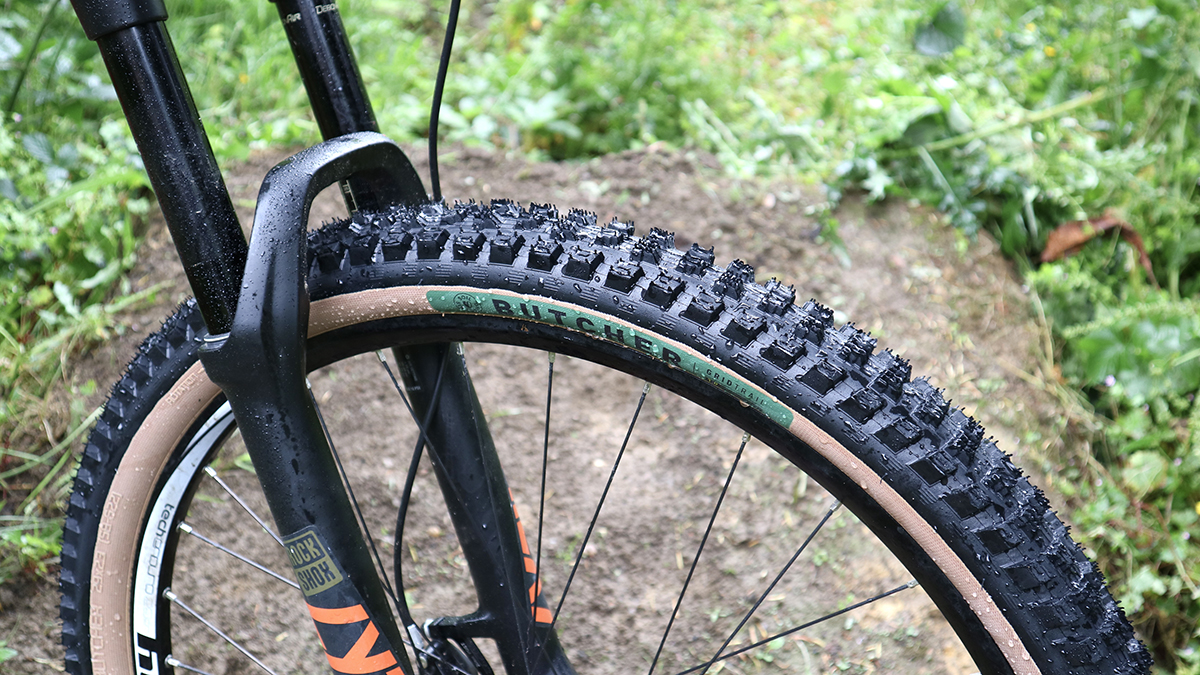
Specifications
Reasons to buy
Reasons to avoid
The Butcher T9 Grid Trail uses Specialized’s latest blend of Gripton rubber. It’s comparable in terms of durometer to the softest compounds from other tire manufacturers but Specialized claims it’s lower rebound, so has better damping ability. It just doesn’t get pinged around, so you don’t have to work as hard keeping the bike under control especially riding across rock or dry roots.
To resist flats in those situations, the 60tpi triple-ply Grid Trail casing has an extra floating protective layer that runs the full width of the tire tread. This doesn’t really add that much weight – the Butcher is one of the lightest trail tires tested – but it does add some stability, allowing you to run slightly lower pressures without the tire tucking or folding under load. The lug layout is similar to the Maxxis DHR II featured in this buyer's guide but they’re slightly deeper profile, so offer a little bit more bite in loam and the wet. The Butcher T9 works really well riding at slower speeds where you have to pick your way down but it also has a good turn of speed for those long dirt road sections.
In our tests, we found the damping effect was obvious straight away. There was none of the very pressure-sensitive jarrings on really rough or sudden impacts and it didn’t crumple or fold suddenly if we dropped pressures low. Our reviewer Guy Kesteven also found that, "Ripping them round the concrete hard bucket berms and rutted flat corners of the recent tundra weather on our test trails didn’t reveal any vices, just vast amounts of snarling grip."
If you're after more detail, check out our full Specialized Butcher T9 Grid Trail tire review.
8. Best lightweight
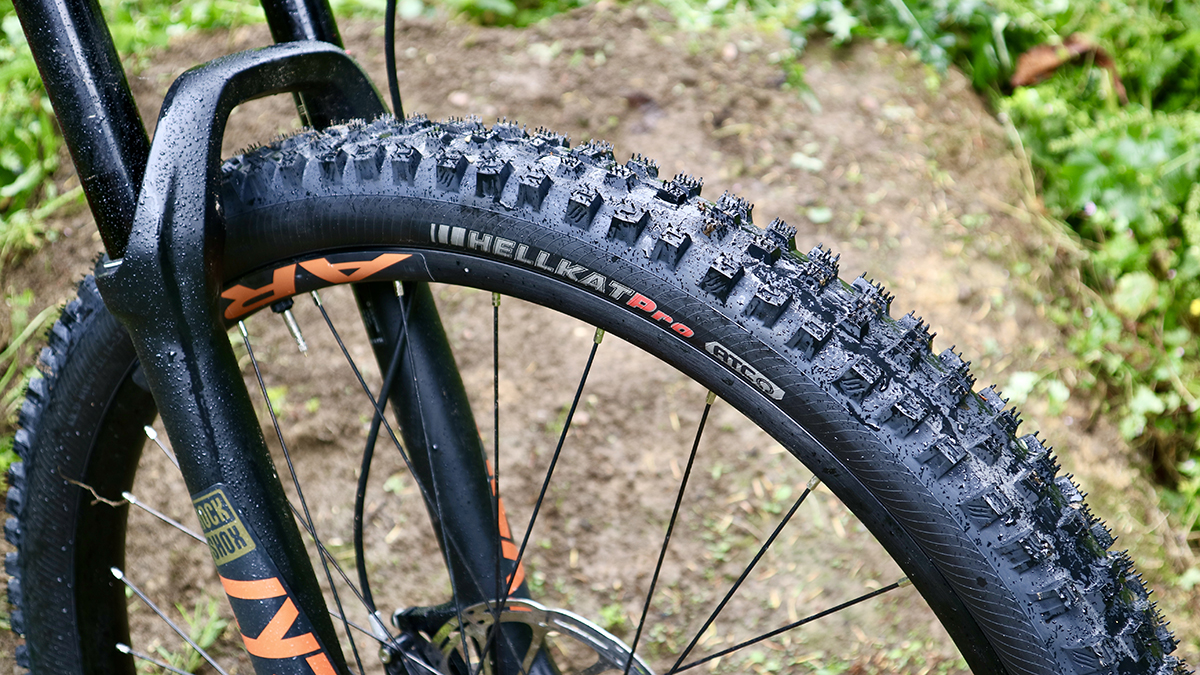
Specifications
Reasons to buy
Reasons to avoid
Depending on your riding, the Kenda Hellkat Pro is available in three different casing structures – ATC, AEC, and AGC. The middle letter stands for trail, enduro, and gravity respectively and from a structural point of view, the gravity casing has an aramid strip under the tread with an Apex chafer to resist pinch flats. The light enduro tire eliminates this chafer and the trail tire gets some thinner plies, a more resilient 120tpi casing, and an all-in weight of 902g, making it one of the lightest trail tires in this category.
The Hellkat Pro uses Kenda’s ‘dual tread’ construction, which means the center tread uses a firmer rubber and the edge lugs are softer rubber. We measured the hardness at around 55a, which is only medium/soft but the company claims the rubber also has low-rebound properties so on the trails there’s plenty of grip. The HellKat Pro doesn’t do anything weird – we found it’s stable, confidence-inspiring and predictable.
The tread has a flat profile and relatively open moto-cross style tread with some deep lugs, which creates excellent bite and mud-shedding but also has a good turn of speed on the flats. Overall a great tire for all conditions, even those nasty ones in the middle of winter.
Our reviewer Paul Burwell summed up: "It has good grip and braking traction, rolls surprisingly quickly and the moto-x style tread works in most conditions. A summer tire you could easily run over the winter."
For more, head over to our full Kenda Hellkat Pro ATC review.
Best MTB trail tires – rear specific trail tires
9. Best overall rear
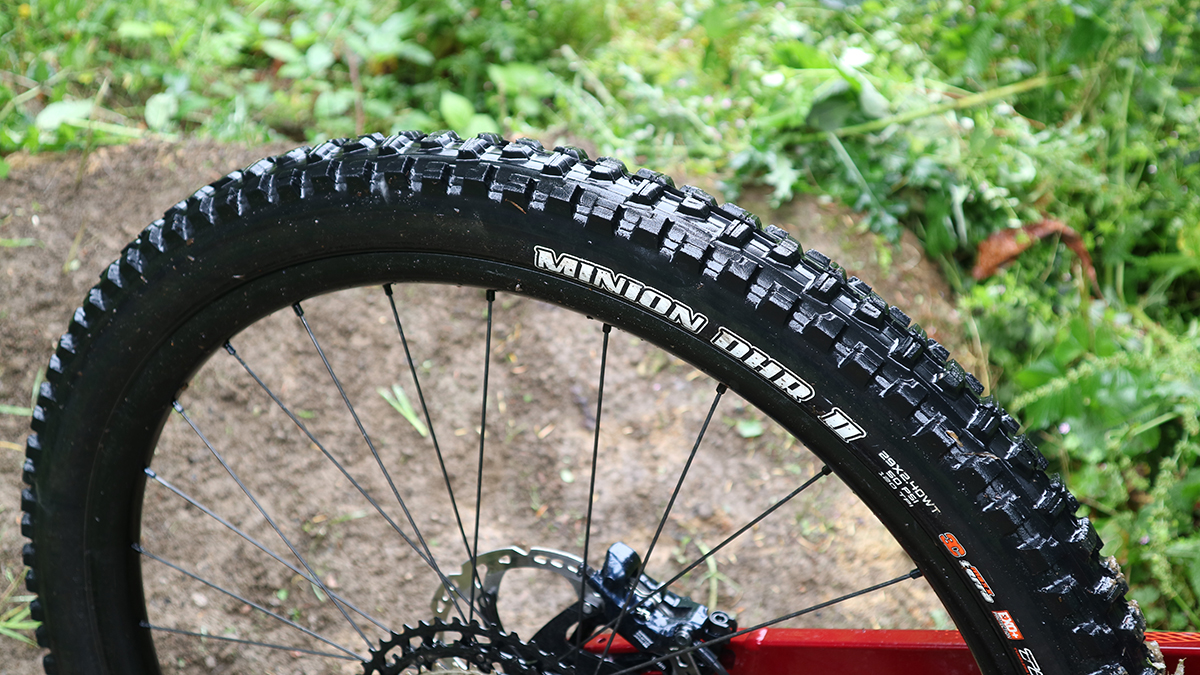
Specifications
Reasons to buy
Reasons to avoid
The Maxxis Minion DHR II was initially launched as a rear-only tire but it turns out to be a balanced all-rounder with an impressive performance on most surfaces – weathered hardpack, deep loam, and even sticky mud. There are front tires with more bite in this Buyer's Guide but on the rear, we've found the DHR II is peerless. In our tests it did everything with assured confidence and felt stable even on loose or slippery off-camber. Rolling speed is a notch below some (choose the Dissector if you need that extra MPH) but braking traction is up there with the very best, especially if you up the size to a 2.5 or 2.6in.
It also comes with three casing options (Exo, Exo+, DD) allowing you to tune the weight and protection levels of both wheels to the terrain. For example, if you’re at the bike park or sessioning downhill trails on a long-travel trail bike, fit a DD or Exo+ on the rear, Exo on the front – it’s what bike manufacturers do. It can be a little draggy in the bigger sizes and with the DD casing but it’s a solid tire that won’t let you down.
Our reviewer Paul Burwell reported: "The wide, open, block tread is utterly reliable whatever the conditions. Literally from loose, kitty litter trail center surfaces in summer to dirty Welsh woods in winter, you can go super heavy on the brakes and slam lean angles knowing that a DHR II will let you get away with more than almost any other tire."
See our full Maxxis Minion DHR II review for more.
10. Best fast rear
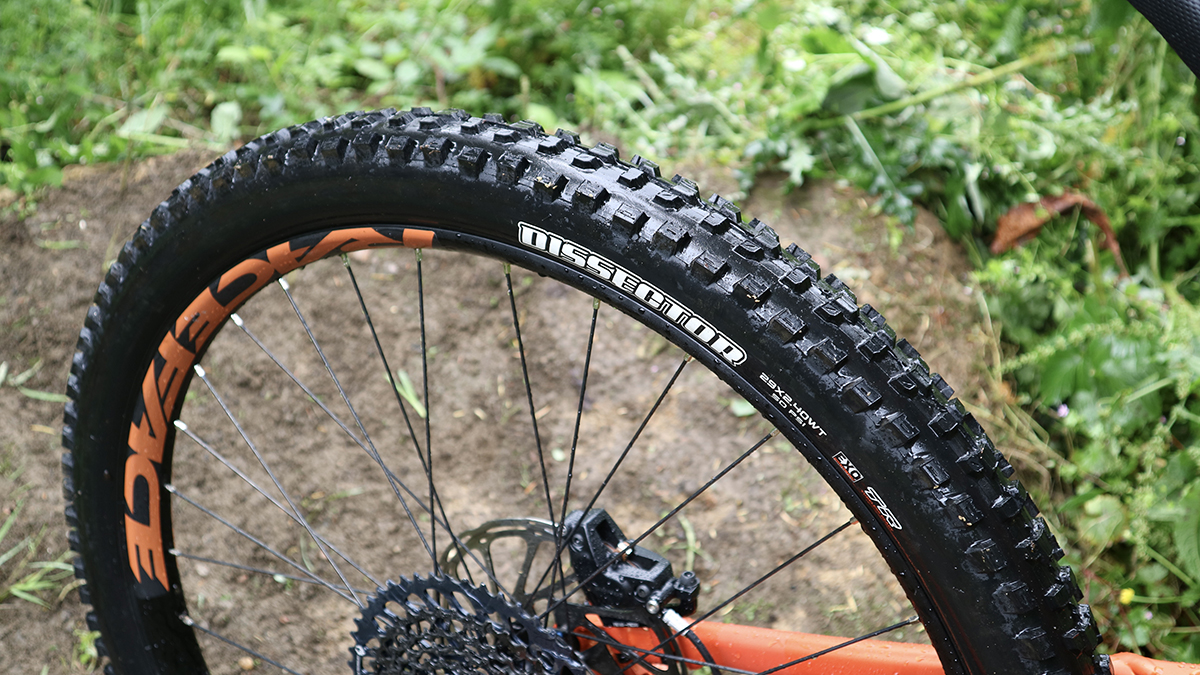
Specifications
Reasons to buy
Reasons to avoid
There are more aggressive trail tires in this Buyer's Guide, but the Maxxis Dissector is a great rear-only choice if you want to add a bit of urgency to your ride. It doesn’t have the deepest lugs, so we found braking traction can be lacking in wet and slippery conditions as the shallow spaces clog up, but the flatter profile and smaller 2.4in size mean on hardpack or dirt roads it accelerates quickly and carries that speed for an age. The oversized side knobs and 3C MaxxTerra compound also allowed the tire to hold a tight line on loose off-camber trails and if it did break away when we'd been too heavy on the anchors, it did so in a predictable manner.
If you ride hard and end up slamming into roots or catching stumps, you will want a bit more protection on the rear end and the Dissector does come with the Exo+ reinforced casing. This adds some stability to the tire but also boosts puncture protection, both snakebite and thorn type. It would be nice to see a DD or gravity option but with the focus on speed, this is the perfect foil to the Assegai or Minion DHF up front.
Our reviewer Guy Kesteven summed up: "Dissector boosts rolling speed and response, but still feels damped and anchored with great ‘grip to slip’ bandwidth for control surfers."
For deeper analysis, see our full Maxxis Dissector tire review.
11. Best quick rolling rear
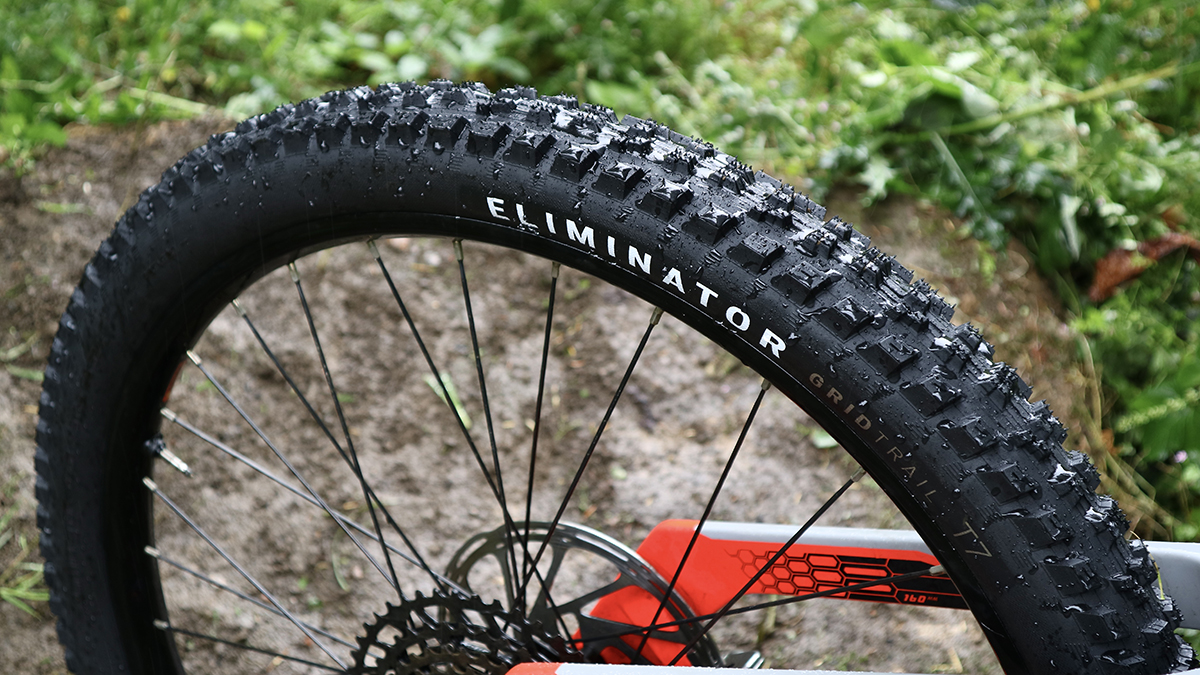
Specifications
Reasons to buy
Reasons to avoid
To enhance rolling speed and reduce wear, Specialized’s Eliminator uses a slightly harder T7 Gripton compound than the T9 Butcher featured above. It does mean it’s only average grip in most conditions, but we've found there’s a definite high energy feel on hardpack and as a rear-only tire it is rapid.
It also features the company’s latest Grid Trail casing construction with an extra ply under the tread, so for a narrower 2.4in it has good pinch-flat protection. The lugs are quite shallow (and small) in the center, so braking traction is only average, and in wet corners we found it could slide way too easily. The burly side knobs did add some much-needed stability and the tire hooked pretty well when trying to skirt along an off-camber section, but this is definitely a dry condition only tire.
Our test sample leaked sealant quite a bit during the initial setup but it seated on the rim first time. The 2.3in doesn’t have a massive footprint, so you will need to be mindful of the tire pressure if you’re a bigger rider or you like the smash turns.
Our reviewer Paul Burwell summed up: "The quick rolling rubber doesn’t offer enough traction up front, but this is a rapid, rear wheel ripper. Its reinforced Grid casing is durable, the rubber is long lasting and it’s a killer value for money option for burlier riding and (in the 2.6in size) e-bike use."
For further info, check out our full Specialized Eliminator T7 Grid Trail review.
12. Best gravity rear
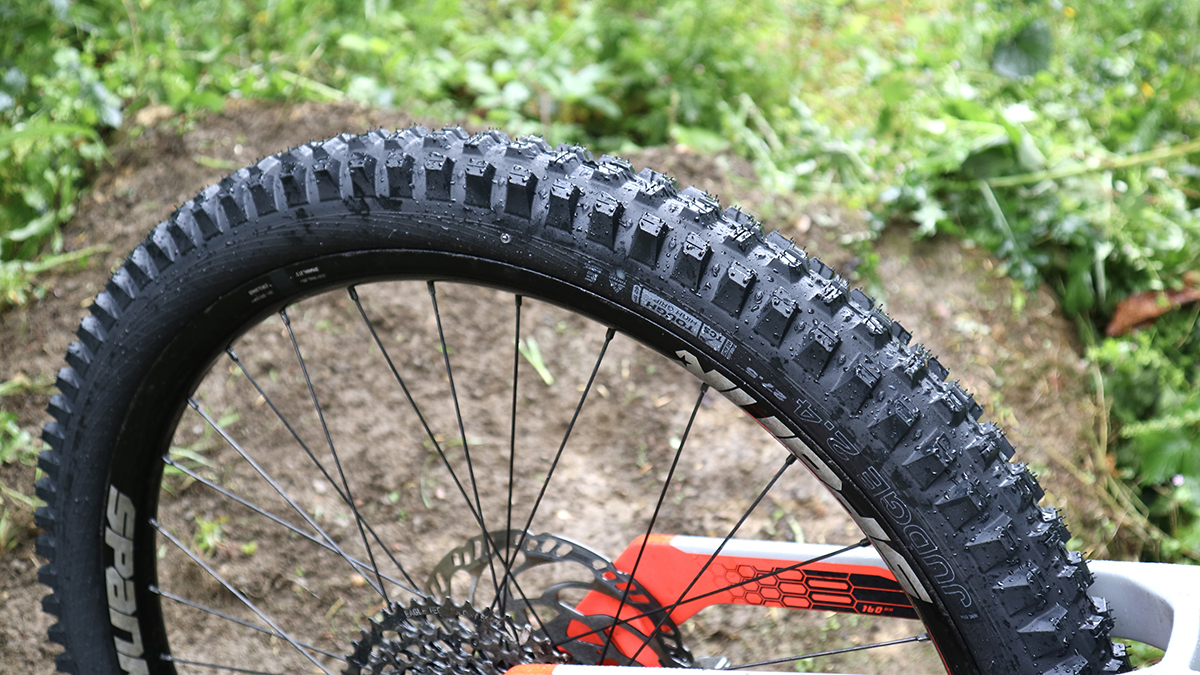
Specifications
Reasons to buy
Reasons to avoid
If you like to take risks or find yourself on a few downhill trails, the WTB Judge with the tough dual-ply casing and high grip Tritec rubber has got your back. As the name suggests, the Tritec is triple compound rubber, which consists of a hard base, medium rubber in the center, and soft edge knobs. The tire is also heavily reinforced but that’s not at the expense of weight – the Judge is similar to the WTB Verdict.
It's no slouch either – in our tests when the trail opened up it picked up speed and carried that speed really well for a tire this chunky. Lean into a turn or cross rut some off-camber and the tire is predictable, surefooted, and confidence-inspiring. There are some burly center bars and good depth to the side knobs so we found braking traction was very good and when it did break, it was predictable, so we didn't end up face down in the dirt.
We have struggled to fit some WTB tires tubeless; they take a bit of work to get the beads to seat but they hold air better than most. The Judge only comes in a 2.4in width but it’s a great tire for crossover trail/enduro/ebike use.
Our reviewer Jim Bland concluded: "The competitive price, premium grip properties and high levels of protection make it a strong contender if you’re a gravity rider on the hunt for a year-round rear tire that grips like stink and won’t flinch when you give it hell."
Check out for full WTB Judge Tough review for more.
How to choose the best MTB trail tires
The best MTB trail tire has to be the best of both worlds, borrowing features from the best XC tires to make them quick-rolling but encompassing the aggressive knobs, grip, and thicker sidewall protection of an enduro or DH tire.
Trail riders still need to cover the ground efficiently, so the tire needs to accelerate quickly, carry speed through turns, and not be too fatiguing on long rides. On the other side of the coin, a trail tire needs to have good grip and traction because modern trail riders are venturing into more technical terrain and riding at greater speed. There’s more risk involved, so you need a tire that is more robust, has a beefier tread pattern, and a thicker casing. And, because trail riders load the tire more aggressively in corners, the compound generally must be softer too.
So how wide are trail tires?
There are no hard and fast rules when it comes to an ideal size but nothing smaller than 2.35in, even on a lightweight short-travel, trail bike. The maximum size you can run on a trail bike is limited by the amount of frame clearance you have although anything over 2.5 is probably overkill. Obviously, always check for clearance and any flex in the rear wheel – if the tire rubs on the stays under load it can wear through the paint or worse.
Are trail tires soft compound?
Every manufacturer has its own rubber formulations, and they are a closely-guarded secret. We ask manufacturers about the rubber compound all the time but few disclose any information. What we do know is the softness or durometer of the rubber; that’s something we’re able to measure. What makes it slightly confusing for the consumer is not all tire manufacturers state the durometer; they often call the rubber a name like ‘super tacky’ or ‘gumX’.
Durometer is only one part of the story but to give you a rough guide, a soft compound tire is around 45-55 on the Shore A Hardness scale, a medium tire is around 55-65 and anything above that is a hard compound.
On a trail bike, you generally want to run a medium compound on the rear and a medium/soft on the front. That way you’ll have good cornering grip combined with quick-rolling and acceleration. The firmer rear tread will also wear better, saving you money.
What tread should you choose?
Since you are riding aggressively it makes sense to have a more aggressive tread, meaning deeper side lugs, bigger blocks, and more open spacing for mud shedding.
Like the compound the same rules apply, some of the best MTB trail tires are symmetrical and they’ll work okay on either wheel but most are front and rear-specific. A good front tire design is one with square knobs in a uniform pattern that are slightly angled on the leading edge for cornering. On the rear, you’re looking for bars running perpendicular to the trail for straight-line grip when braking and accelerating.
Do I need a thicker casing?
A thicker casing will add weight and increase rolling resistance but it’s a must on a trail tire. The reinforcement is often extra plies (layers of nylon) or an additional chafer, which is a strip of reinforcement between the body of the tire and the rim that helps reduce the risk of pinch flats. It will usually say if the sidewall is reinforced, but you can also tell because it adds weight, around 50-150g.
Again, you can run dedicated casings front and rear on a trail bike – lightweight (or regular) on the front, reinforced on the back. Why? You lift the front over obstacles, but the back often comes along and smashes into them.
Does tire pressure matter?
Mountain bike tire pressure is critical and it’s something you should check before every ride with a proper pressure gauge, especially in hot or cold temperatures. Even a couple of psi can make a significant difference to performance.
Some riders believe a harder tire is quicker rolling and that might be the case on, say tarmac, but an overinflated tire will be hard to control because it won’t deform to the trail surface, and you’ll decrease grip and braking traction. Then again if you go too low, the sidewall can partially collapse or roll under hard cornering efforts and that can also lead to a loss of control. If you hit a jump with a soft tire, it can cause the front end to squirm off the lip and bottom out on the landing.
Tire pressure is relative to volume, so the bigger the tire the less pressure you need. With a 2.6in tire, you can run as little as 18psi but for an average weight rider on a 2.4-2.5in tire, we’d recommend running around 20-25psi. If you’re unsure about what tire pressure to run, try experimenting by changing the pressure a few psi at a time and keeping a record.
At the risk of repeating ourselves, tire pressure can vary between the front and rear wheels – the rear is often subjected to harder impacts, so if you want tire deformation and grip to be the same, run 2-3psi more.
Can I run different width tires?
This has been something mountain bikers have been experimenting with for years, so the answer is yes. If your bike is a mullet (29in front and 27.5in rear) you can run a fatter rear tire to close the gap between the diameters but if you want to improve the front-end grip of your bike you can run a bigger tire there too. Bear in mind a fatter tire will have a slight knock-on effect on the geometry; it can slacken the head angle and lift the bottom bracket height.
In most circumstances, a wider tire will offer more grip because of the increased contact patch but in loose or muddy conditions grip is created as the tire digs into the soft surface. A fatter tire can often float over the surface, so in certain conditions thinner can sometimes be better as it cuts through the soft top layer to find grip.
Should I run my tires tubeless?
Almost definitely. Why? Going tubeless greatly increases pinch-flat resistance and offers a significant improvement in tire feel. Most modern bikes are fitted with tubeless compatible rims and most tires are tubeless-ready so going tubeless involves buying a couple of valves and some tubeless tire sealant. You do have to monitor the sealant levels and, seating some tire and rim combos can be a pain, but you’re unlikely to get a thorn type puncture ever again and if it does go pear-shaped you can always backtrack and fit an inner tube.
How we test the best MTB trail tires
All the tires in our review list have have been thoroughly put to the test on a wide range of trails, and in all weather conditions, from dusty bone dry to wet winter mud. We test them out over several months so we can get a proper feel for how they respond in varying conditions and review their durability. Among the qualities we assess are grip, stability, mud clogging, damping, rolling speed, weight, ease of setup, and durability.
Meet the testers
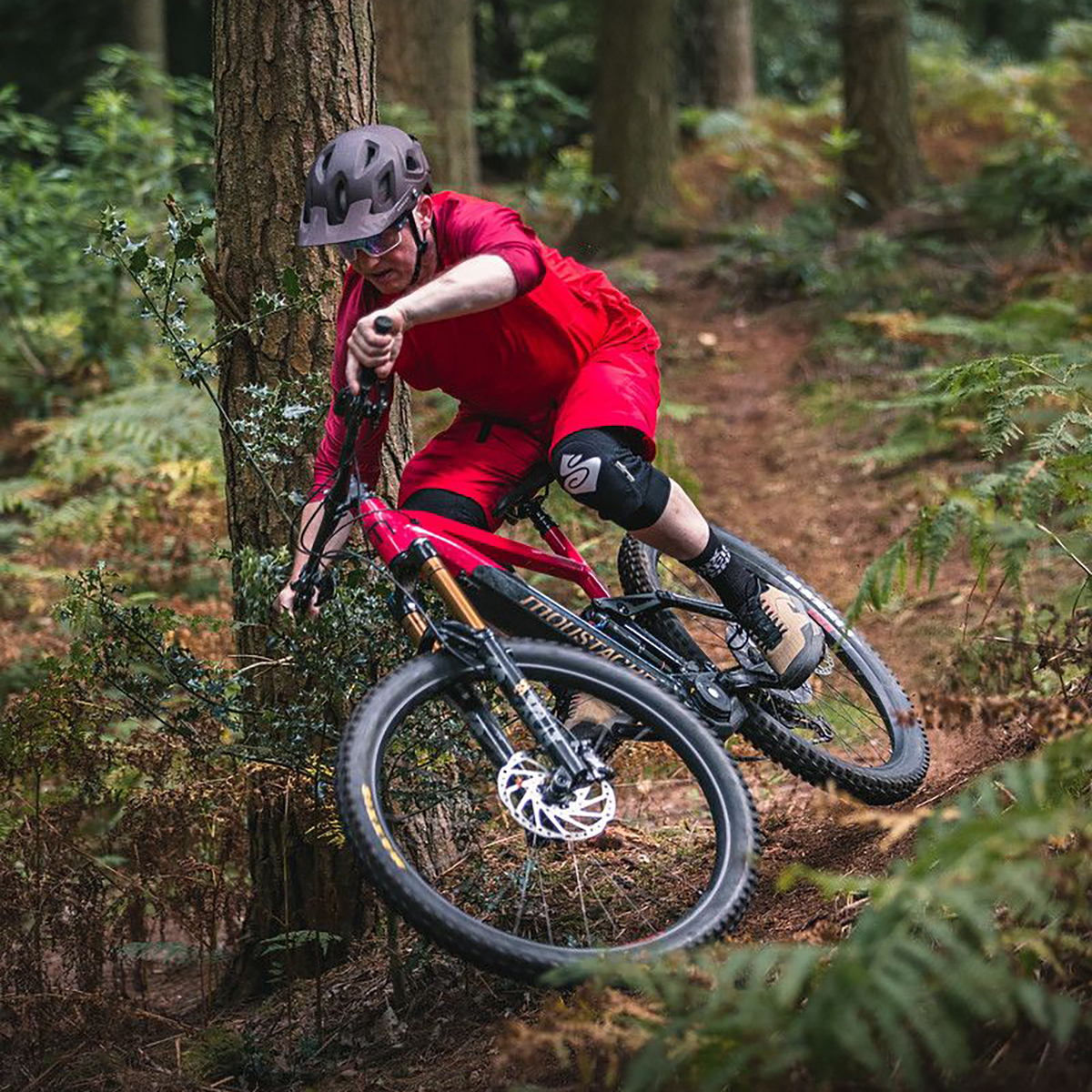
It feels like Paul has been testing bikes and products since the stone age, before suspension, disc brakes, dropper posts, and even the internet. He raced elite-level cross-country back in the 1990s but now spends most of his time roosting trails instead.
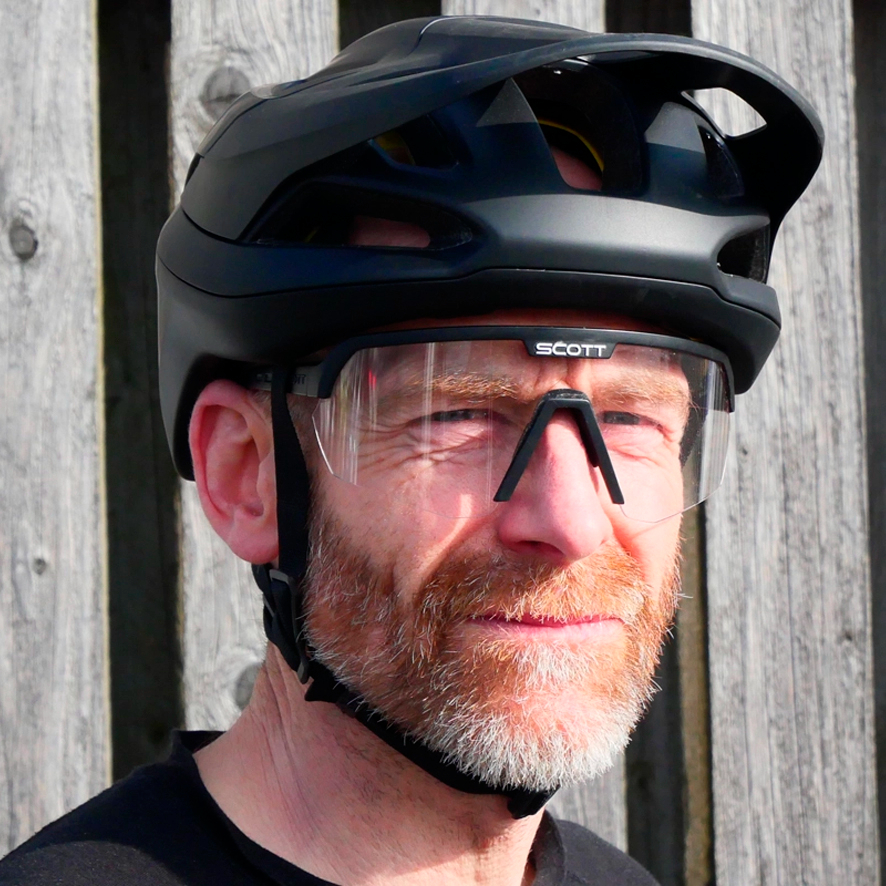
Guy's been testing and writing about mountain bikes ever since they first landed in the UK. Over the three decades he's been involved with MTB, Guy has tested every leading MTB tire on the planet, so knows exactly what works and what doesn't.

Jim Bland is a product tester and World Cup downhill mechanic based in North Yorkshire, England, but working worldwide. Jim’s chosen riding genre is hard to pinpoint and regularly varies from e-bike-assisted shuttle runs one day, to cutting downcountry laps the next.

Paul has been testing mountain bikes and products for the best part of 30 years, he’s passed comment on thousands of components and bikes, from the very first 29ers and dropper posts to latest e-MTBs and electronic drivetrains. He first put pen to paper for Mountain Bike International magazine but then contributed to What Mountain Bike, Cycling Today and Cycling Weekly magazines before a 20 year stint at MBR magazine. An ex-elite level XC racer, he’s broken more bones than records but is now sustained on a diet of trail building, skills coaching and e-bike trail shredding.
- Guy KestevenTechnical-Editor-at-Large
